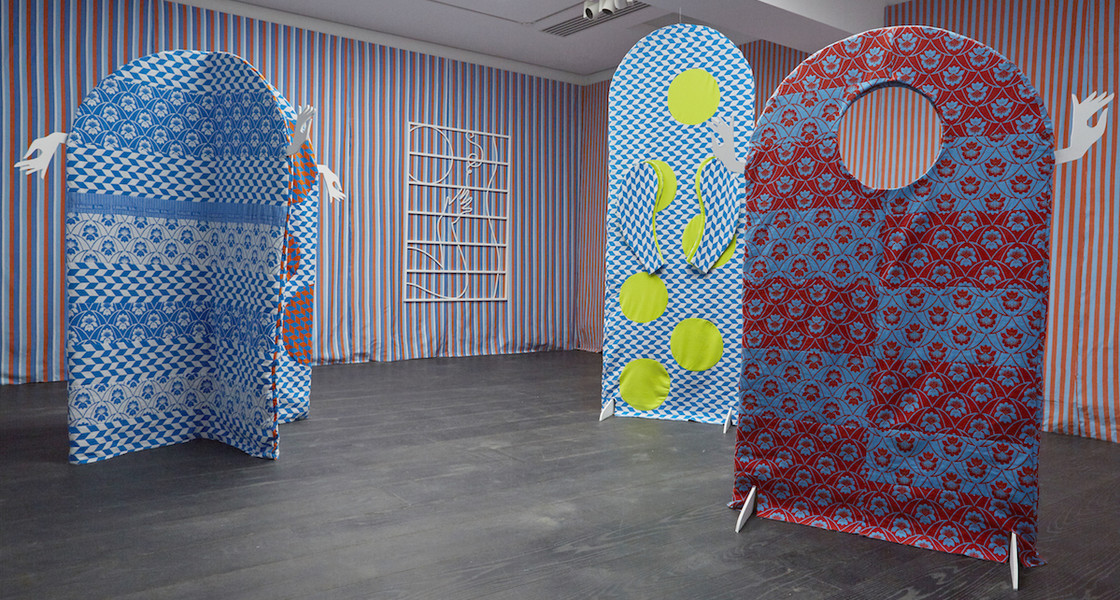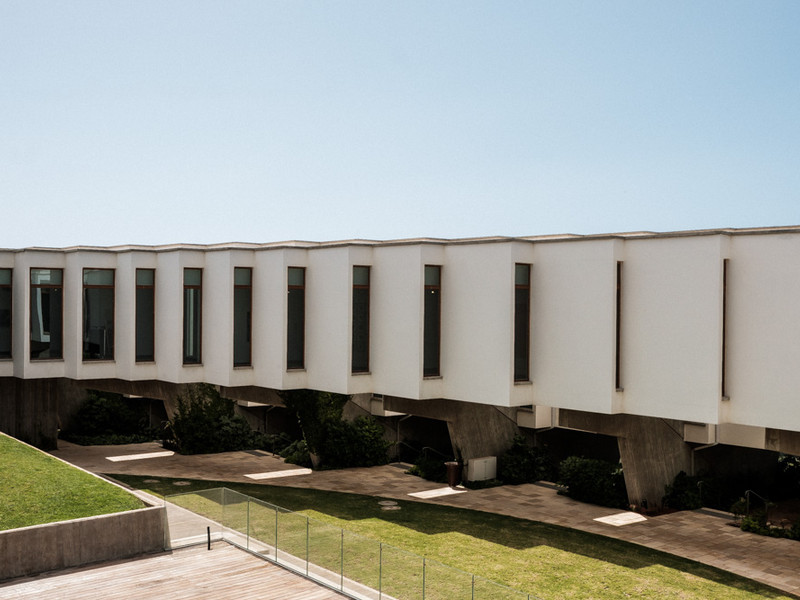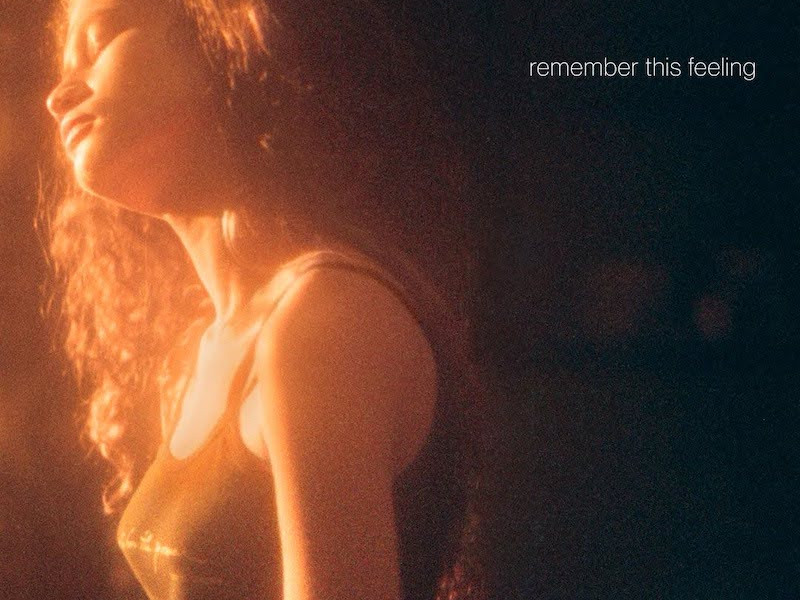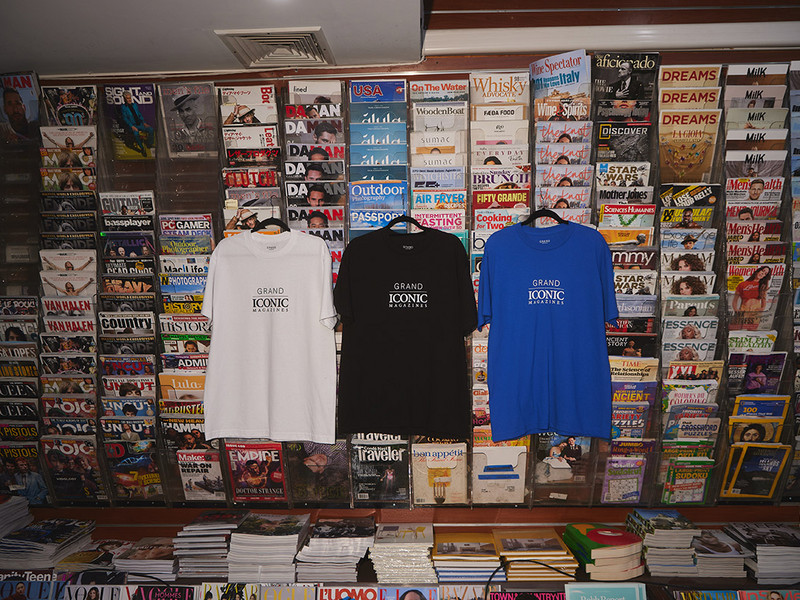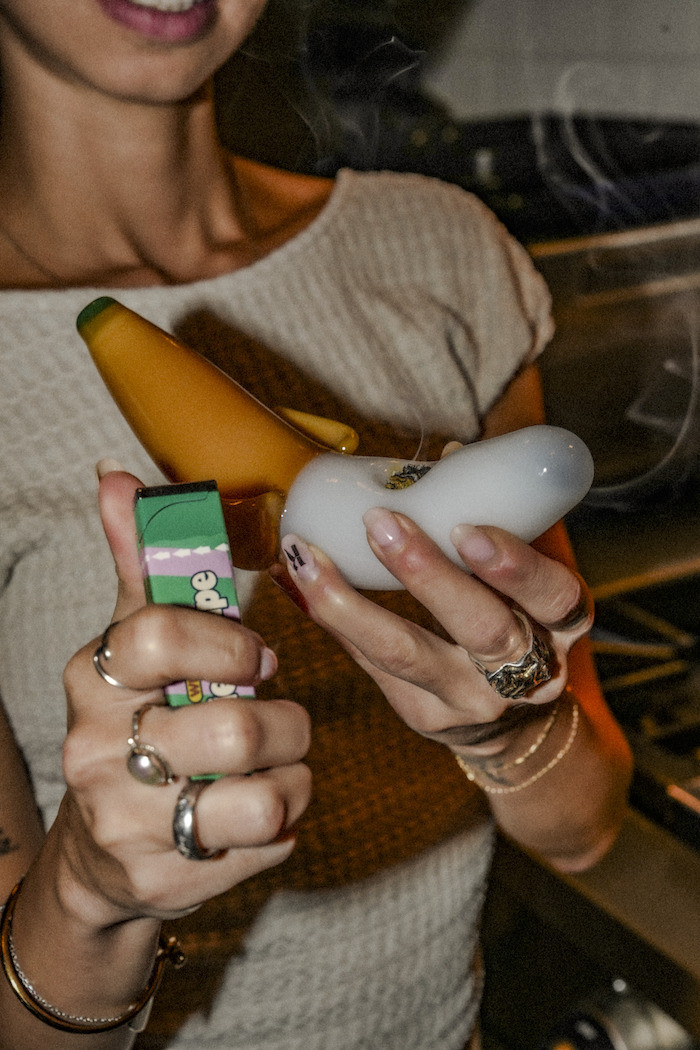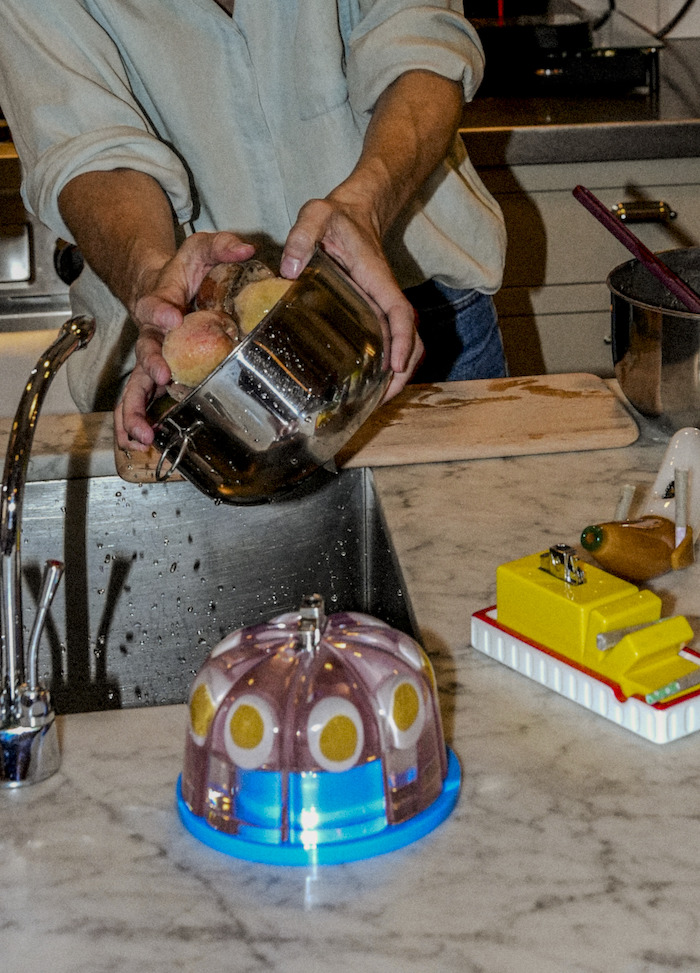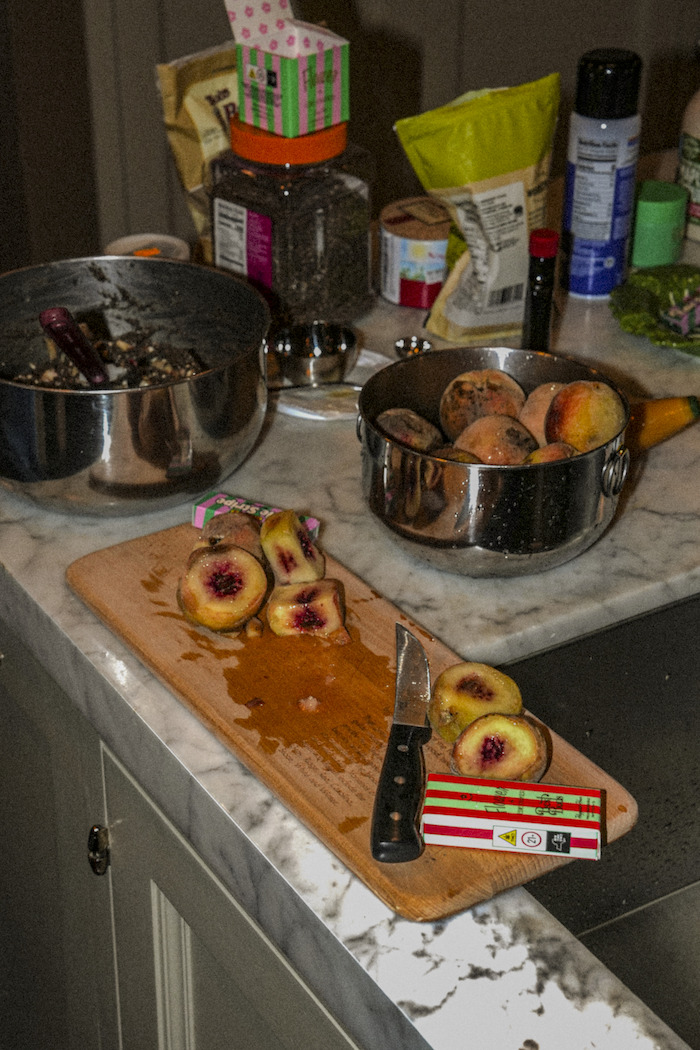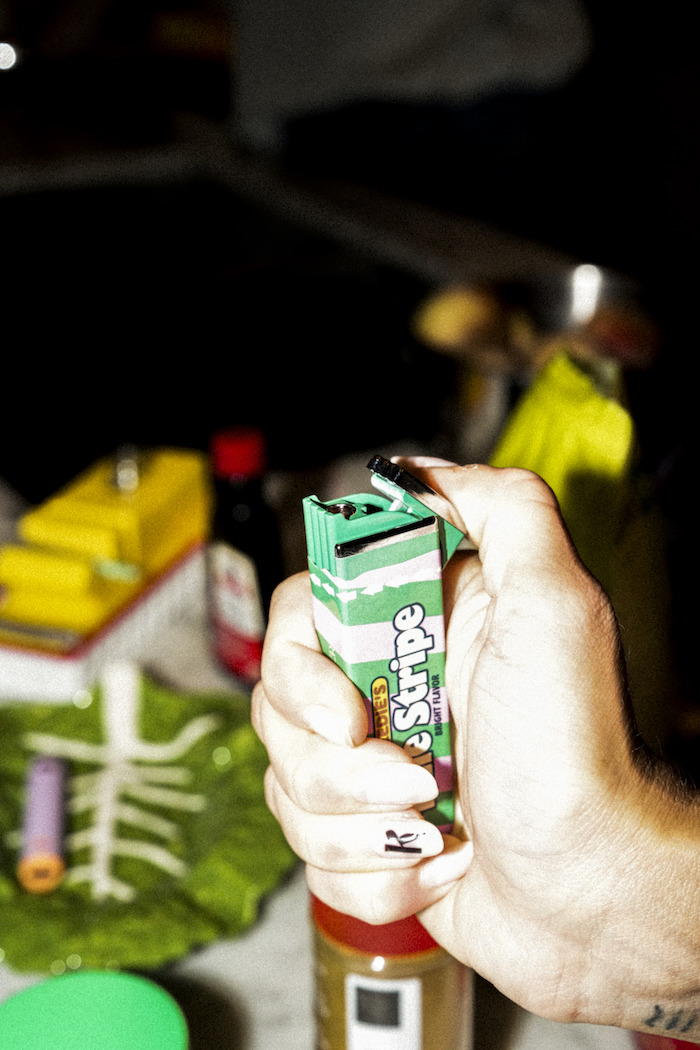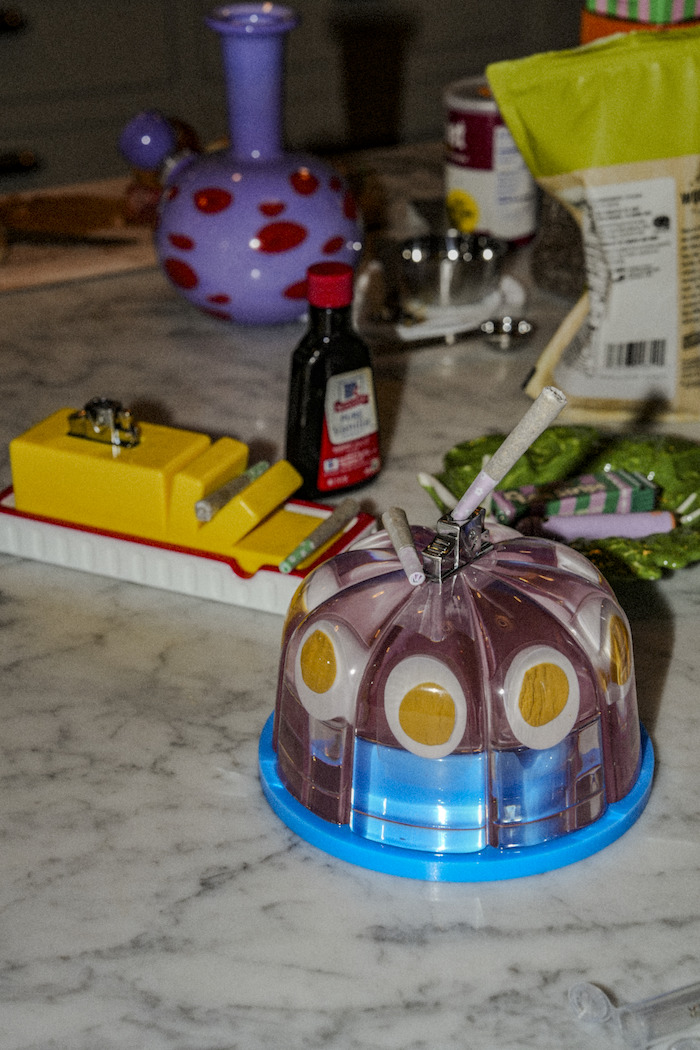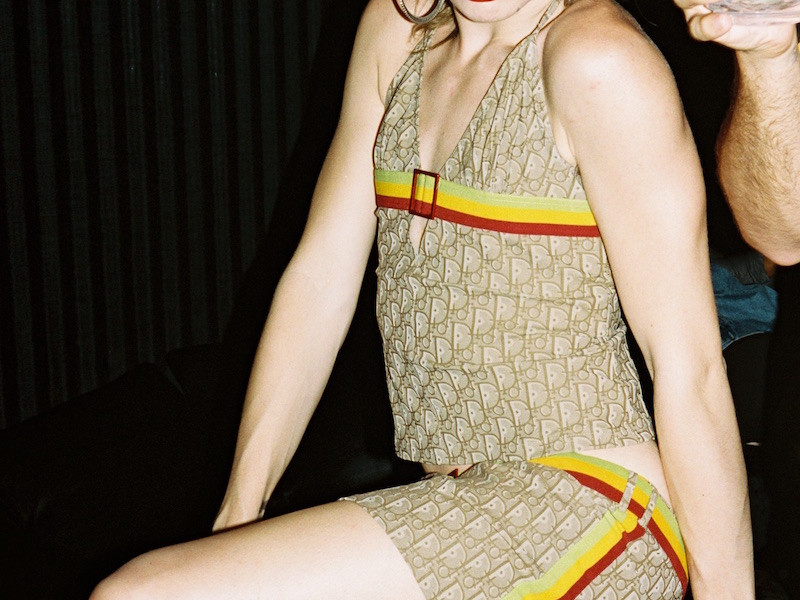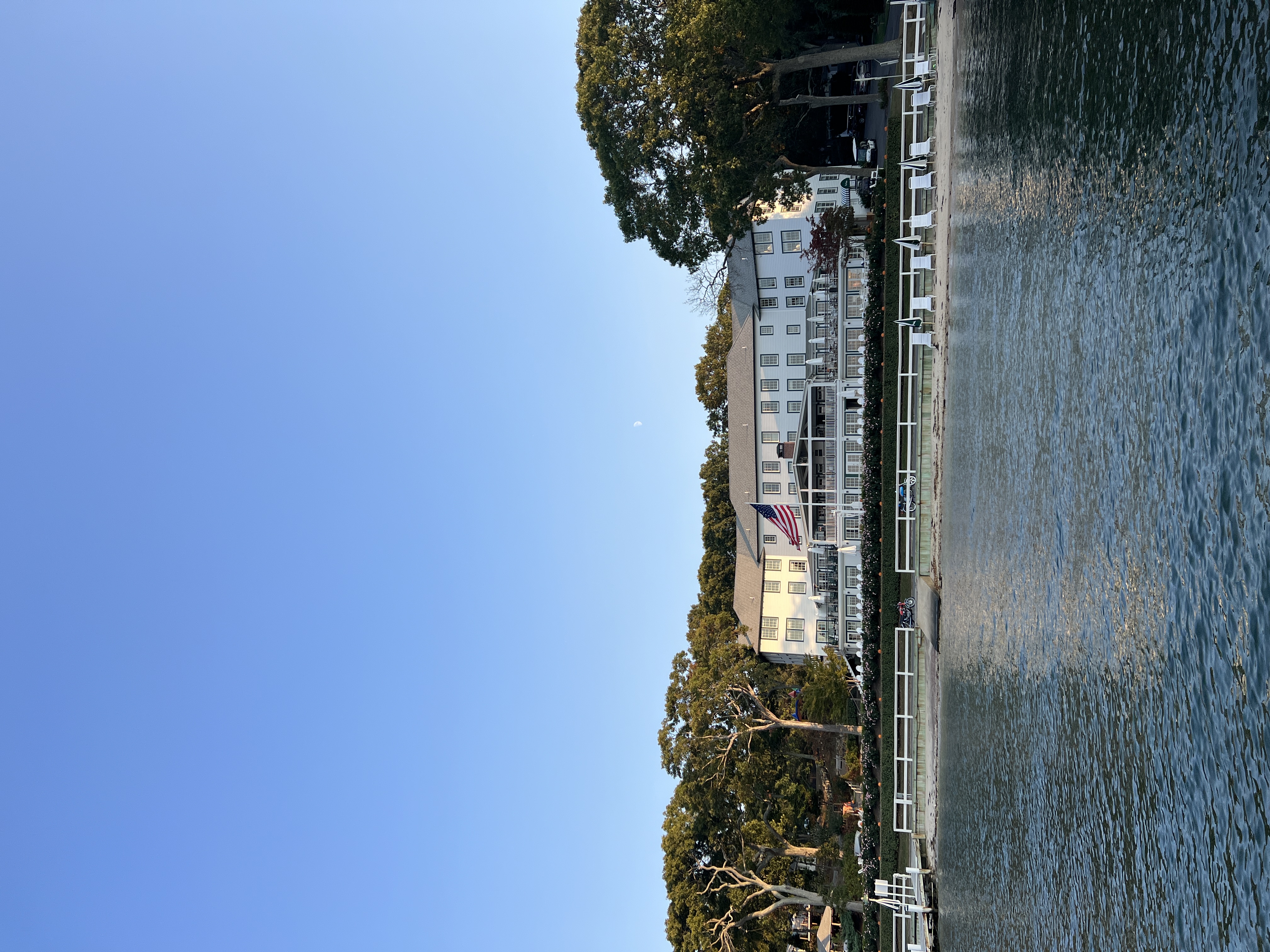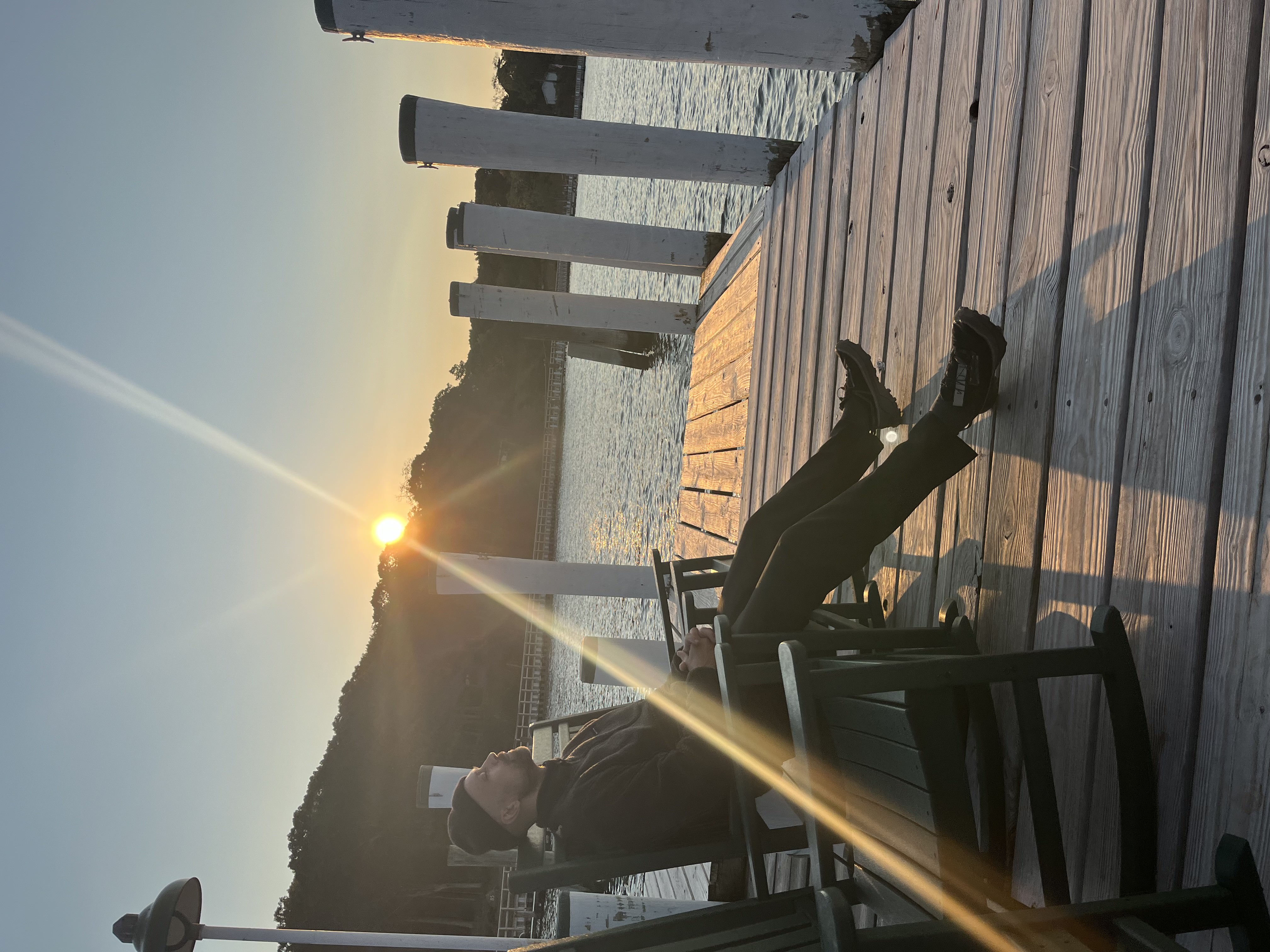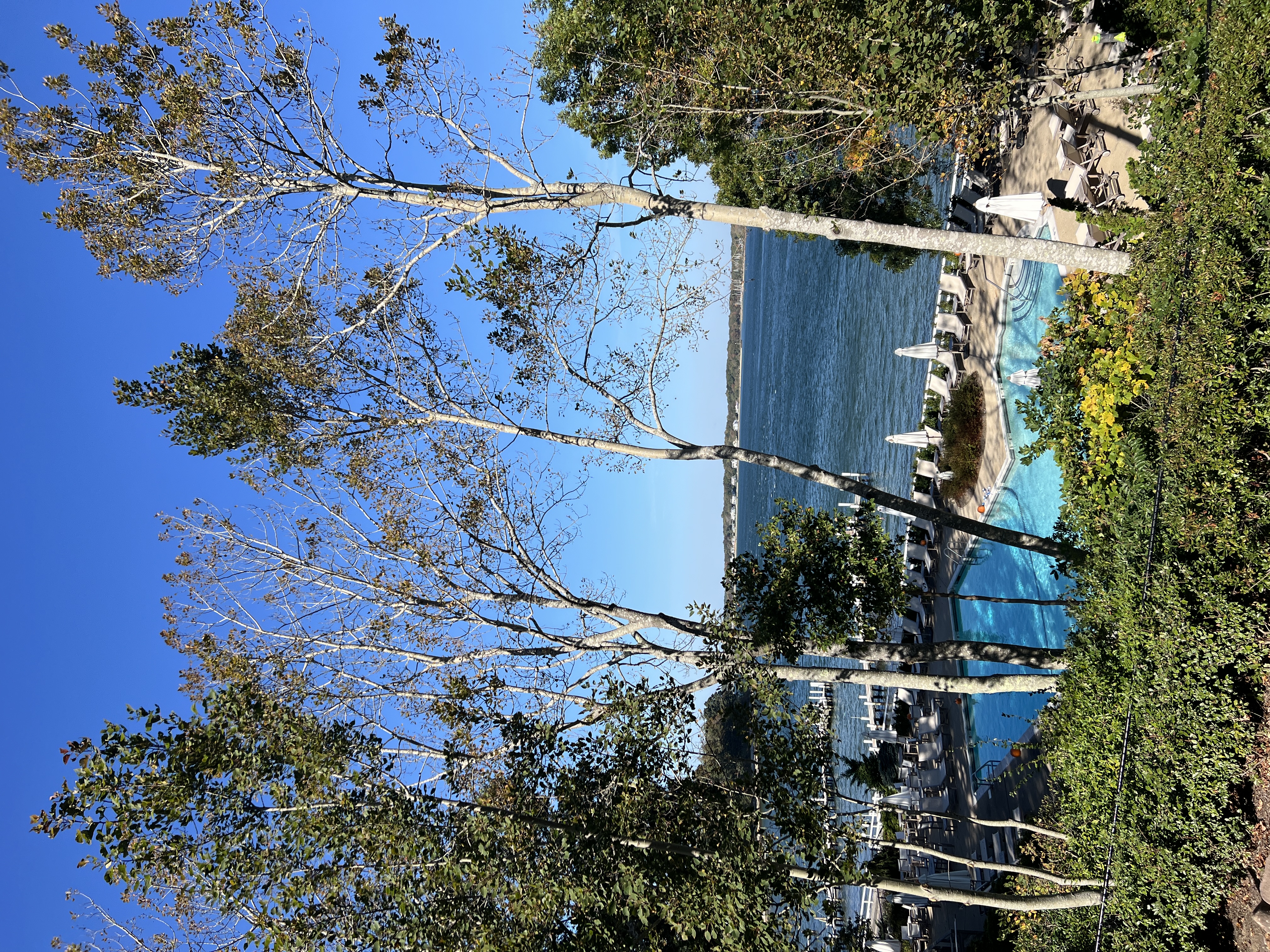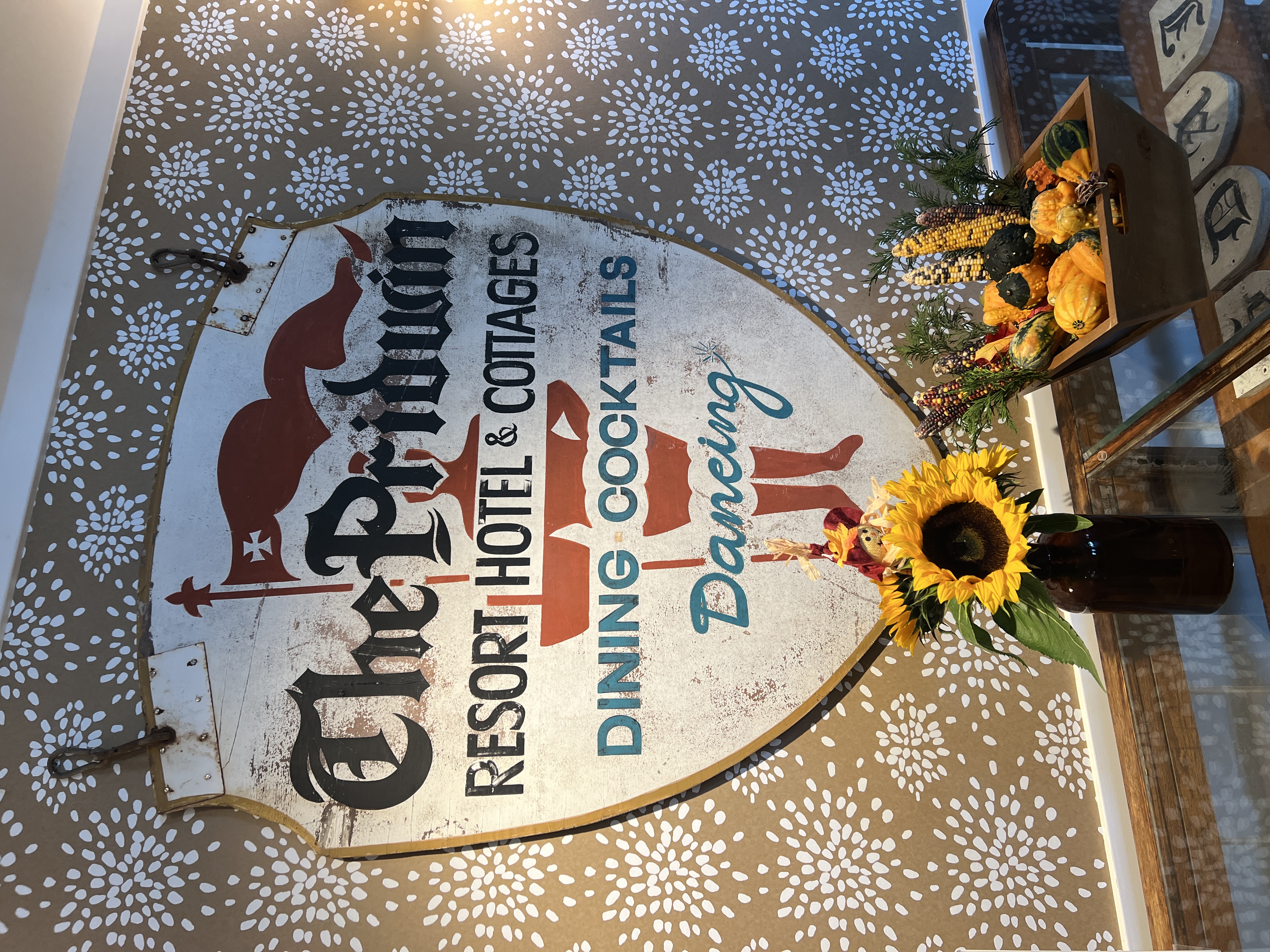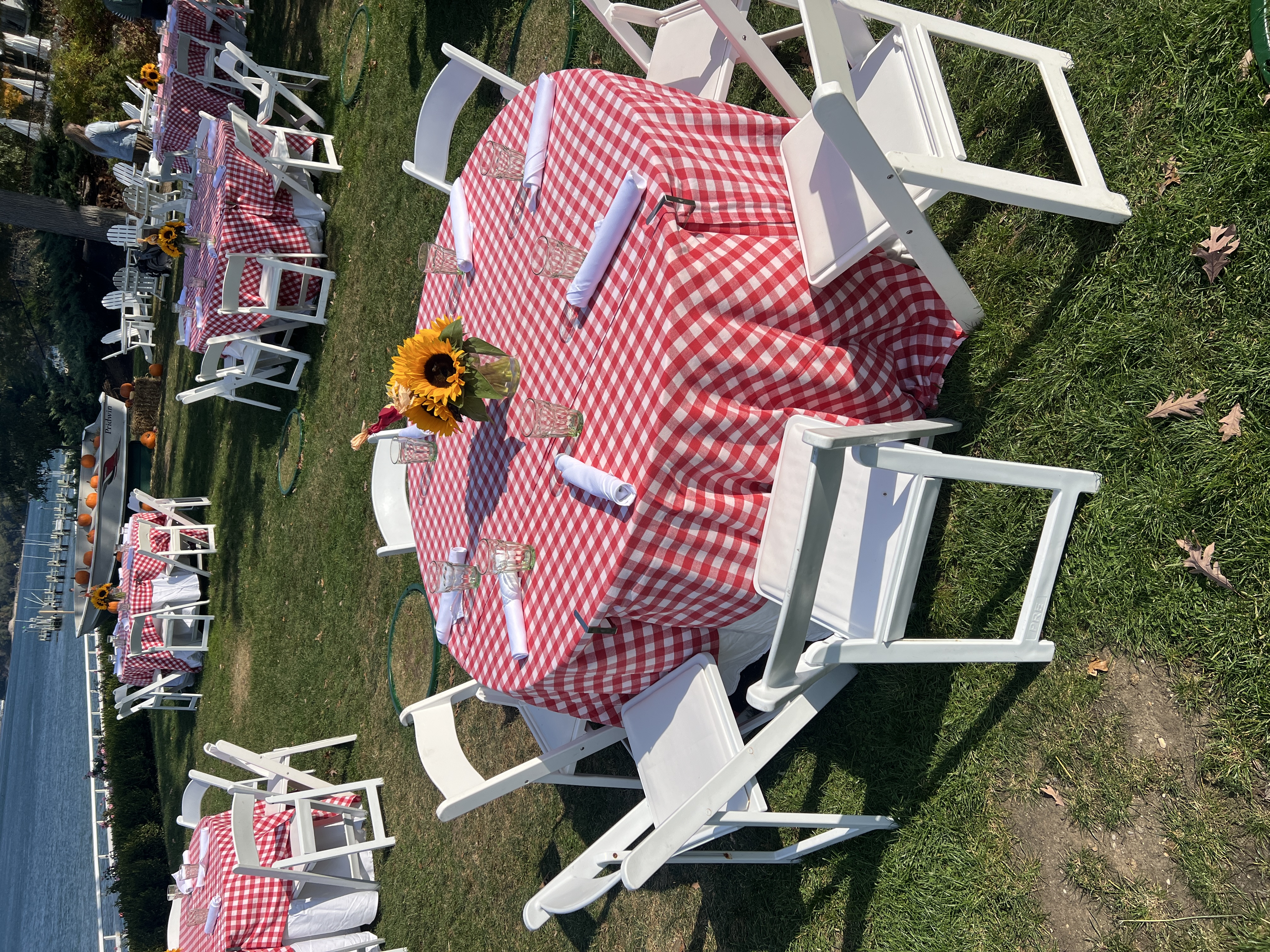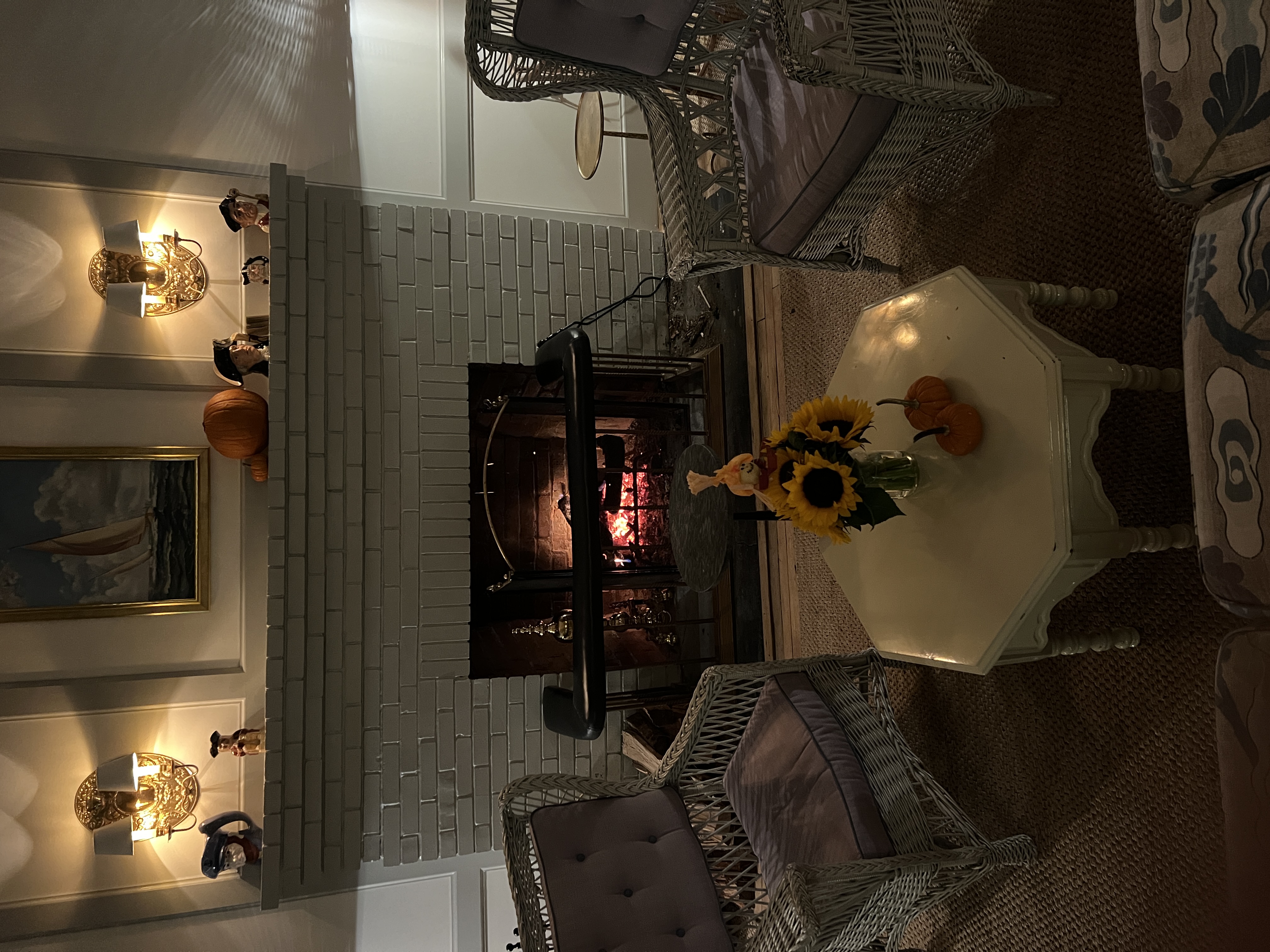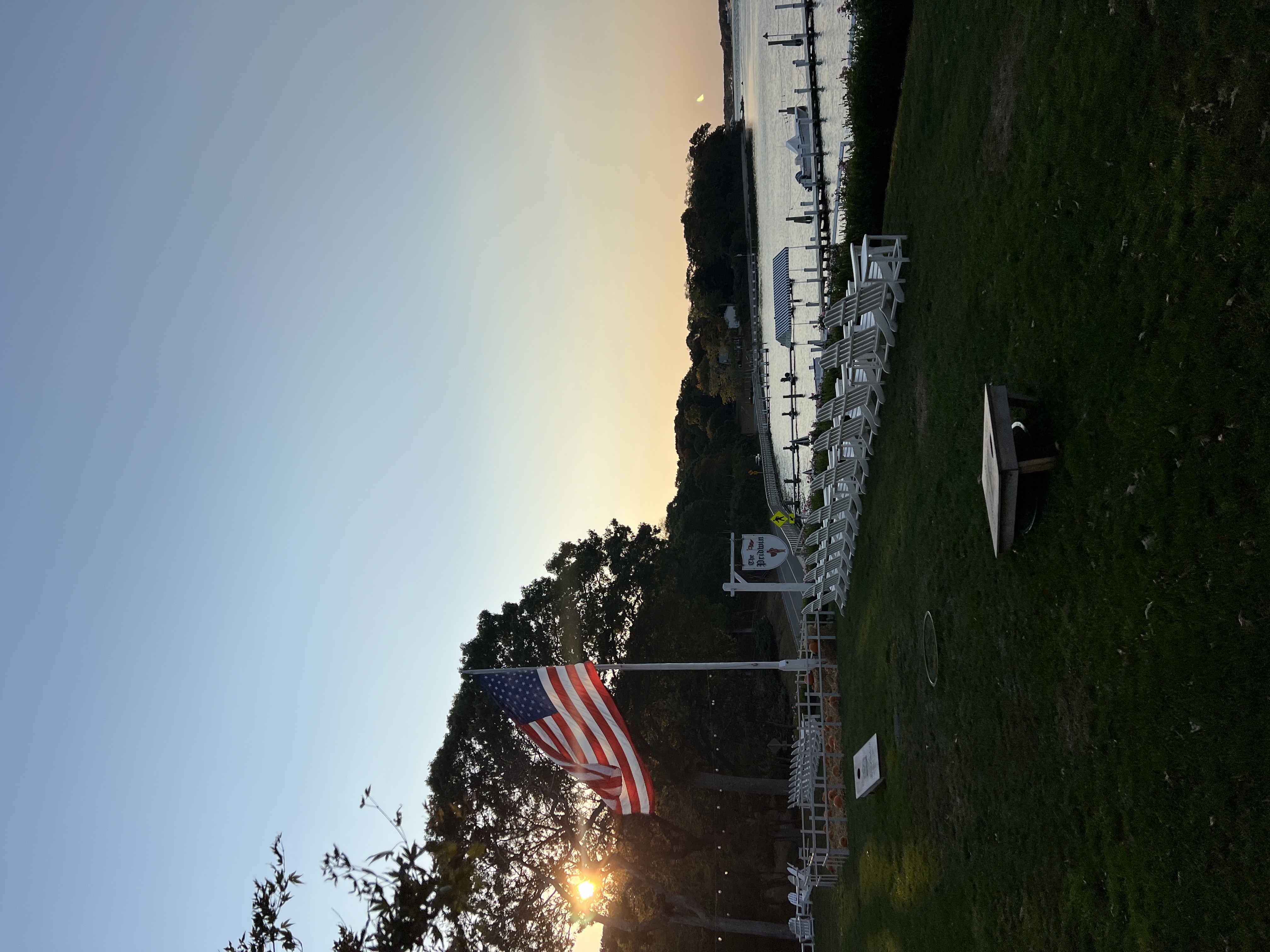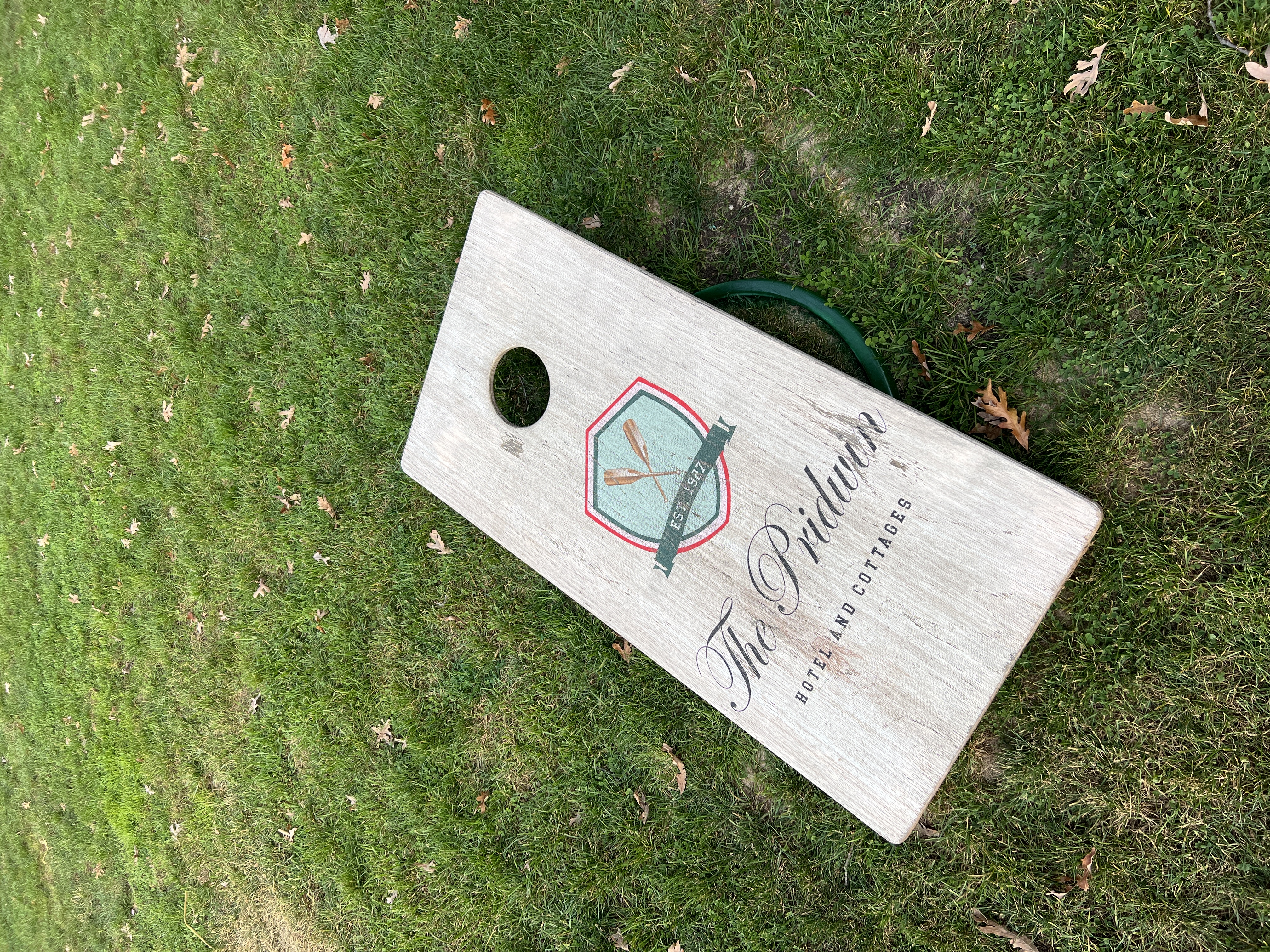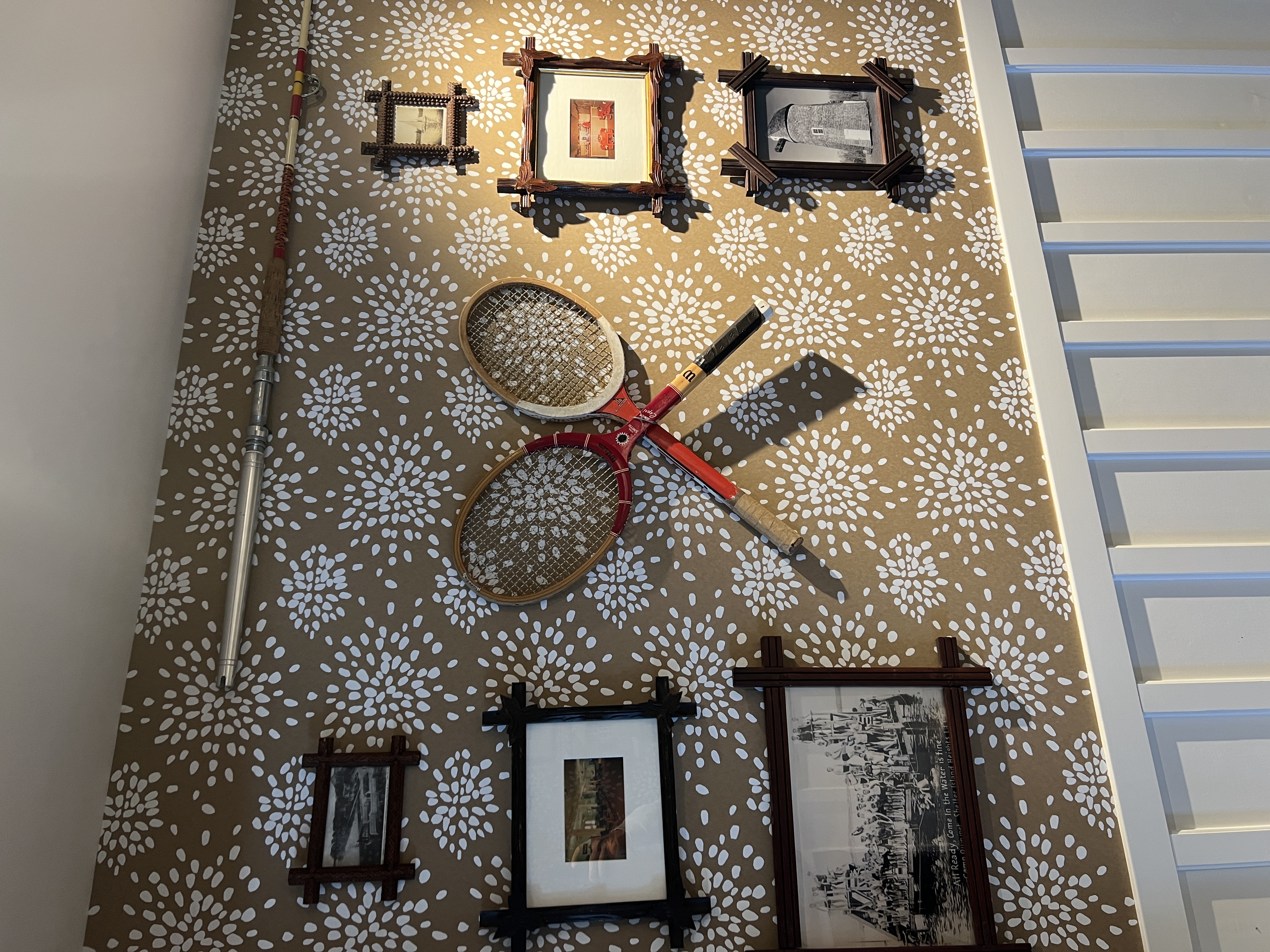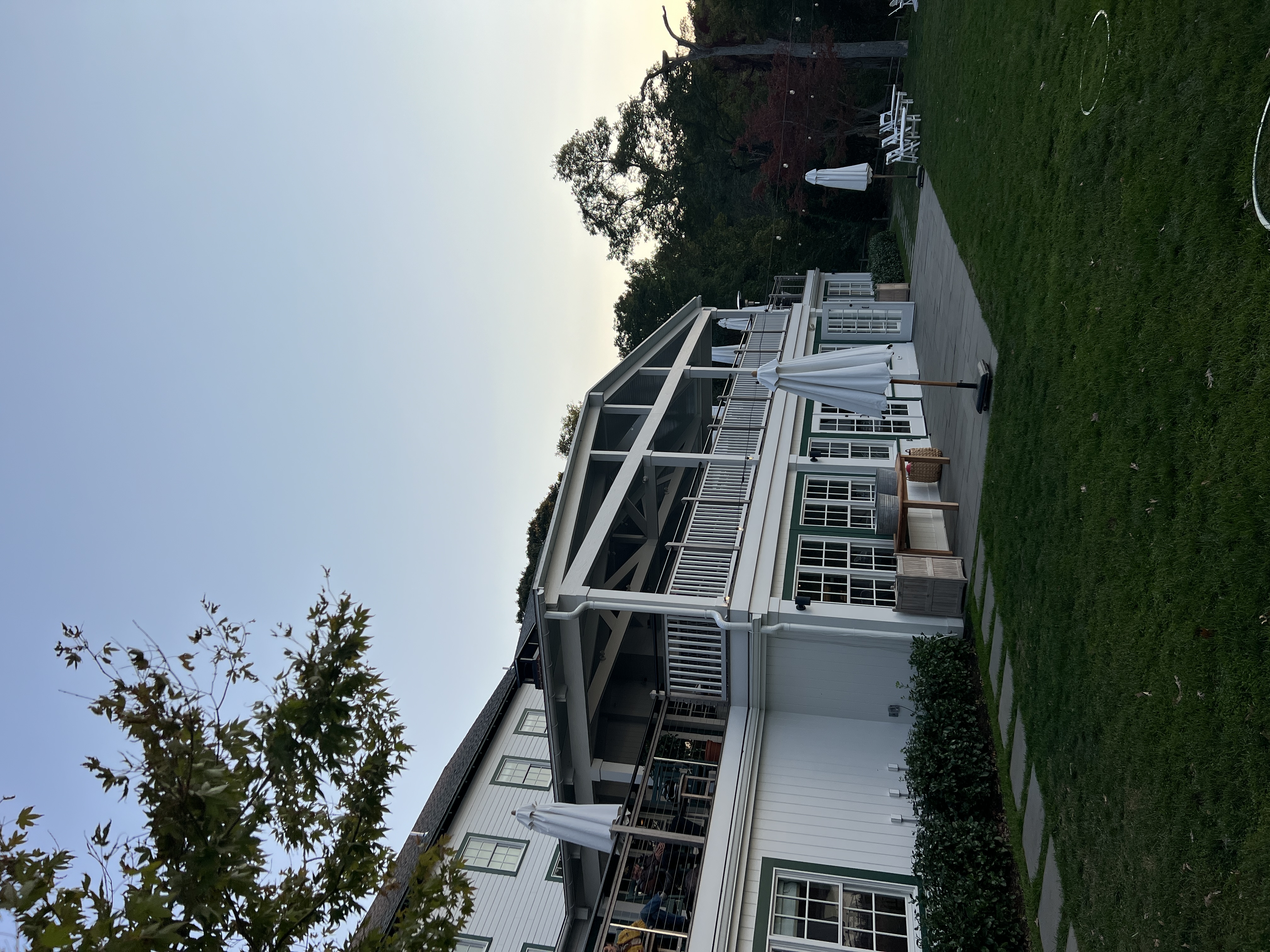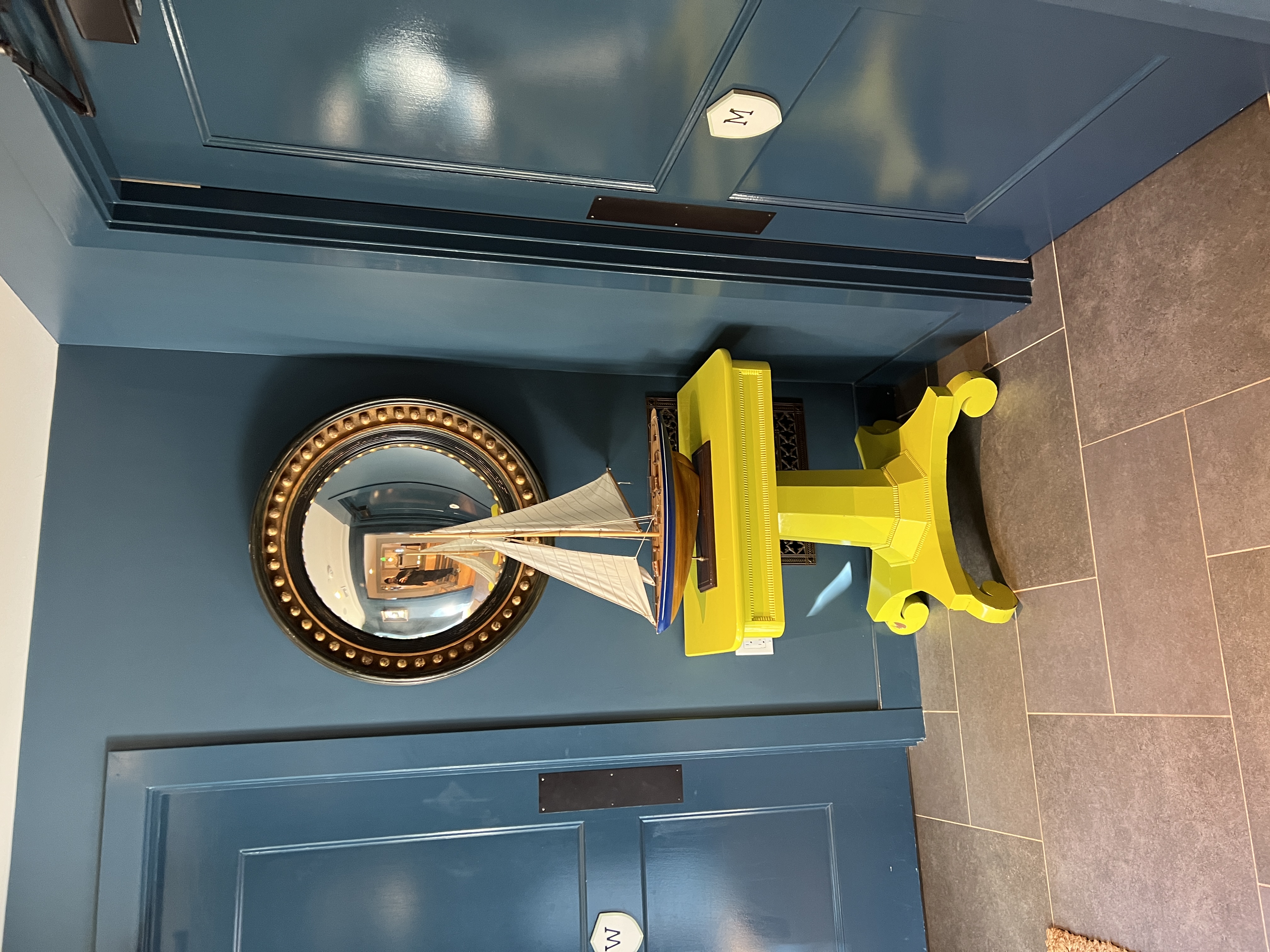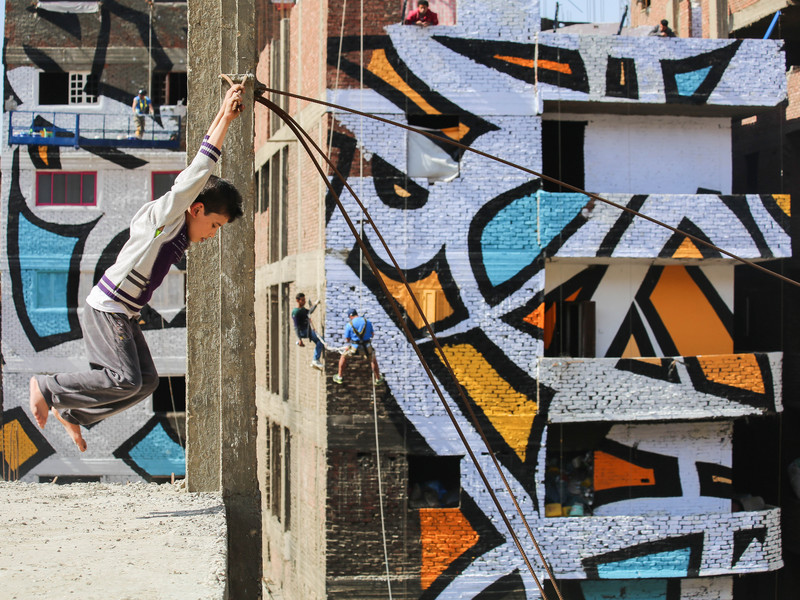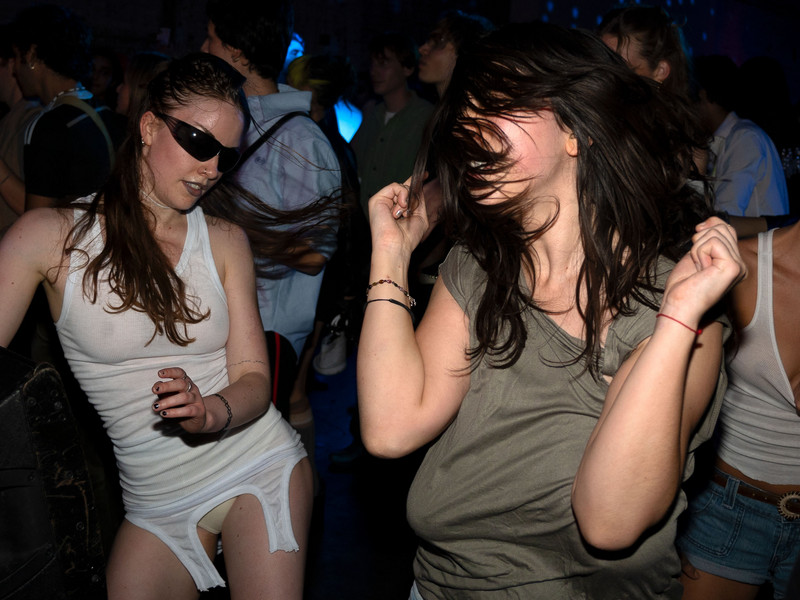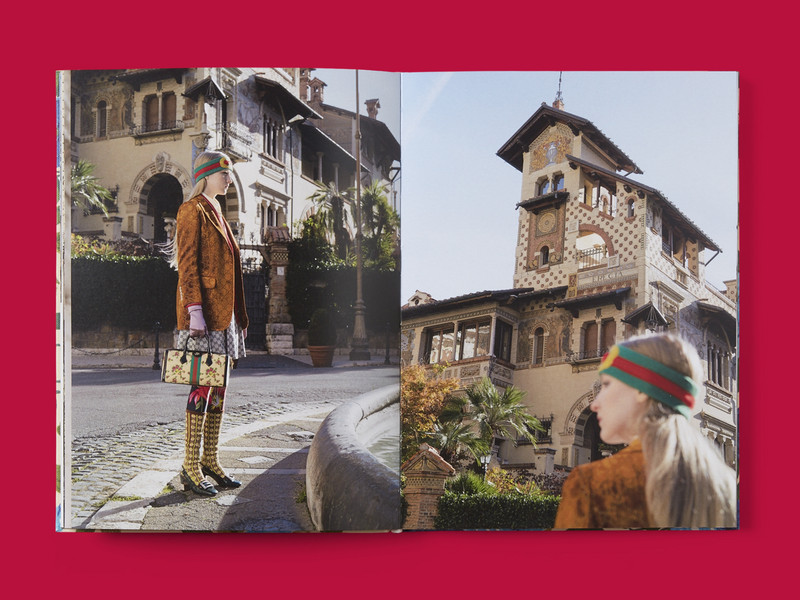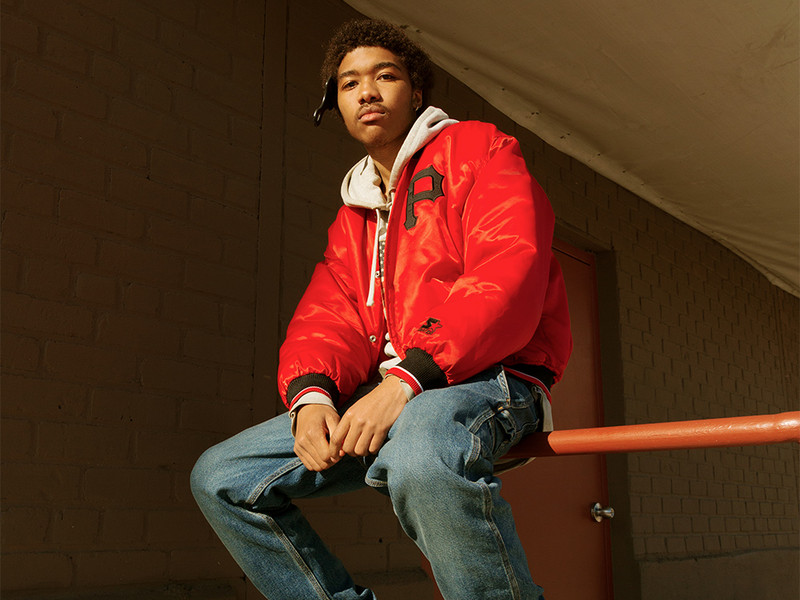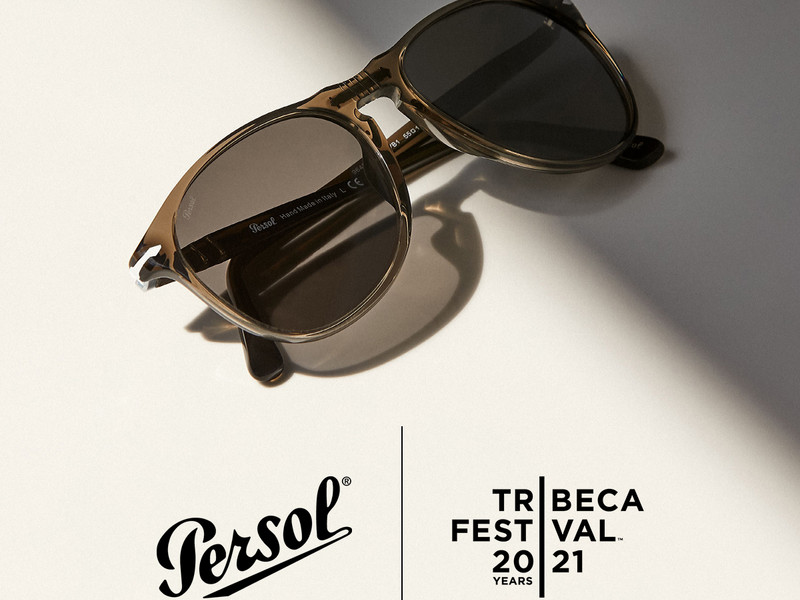NEWGEN Design Delves into Art
These collaborations resulted in artworks and installations, aimed at bringing together the worlds of fashion and arts, by stimulating creativity and inspiring new talents to operate across a diverse range of artistic fields and mediums. All artworks were auctioned at Christie’s King Street gallery in London, and profits donated to the BFC’s charity Fashion Arts Foundation. We’ve talked to the pairs about London as a creative hub for young talents, social media and the outcomes of this experimental project.
- Interview by Emma Pradella and Emanuela Potorti
- Photos courtesy of BFC
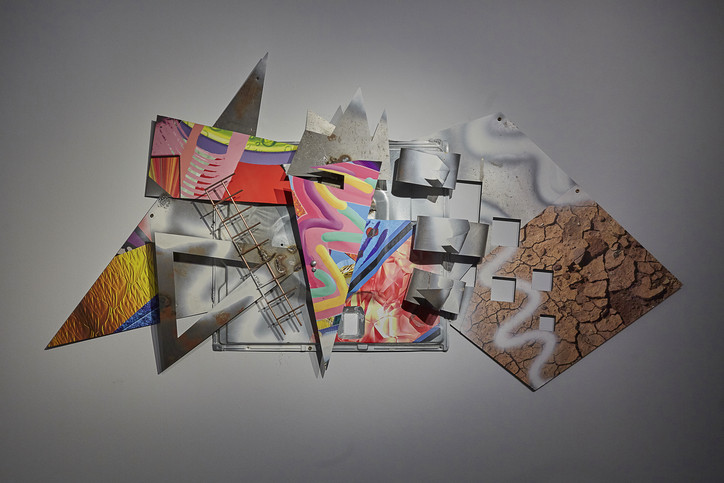
Liam Hodges and Nicky Carvell
Both Liam Hodges and Nicky Carvell explore British subcultures encompassing the grit of urban England and underground movements. While Hodges experiments through wide silhouettes and elements of workwear and sportswear, Carvell turns to abstract digital paintings. Their collaboration resulted in digital colourful artwork printed onto dynamic aluminium shapes.
Tells us about your approach to the Fashion Arts Commission project, and what it was like collaborating with an artist/designer?
LH From when we first met up to discuss the collaboration I feel like we both went in with the same approach to try and challenge ourselves and work in an open minded way to learn as we went. I learnt kind of, how to weld. It was an exciting project, and challenging as I wasn’t just working to my own targets and goals for once.
NC I agree with Liam in that. We already shared a similar 'going-out-in-East London' background which leads towards fearless experimentation when making new work.
This 'can do' attitude was cemented in our road trip to LA where our optimism was encouraged into trying out new processes we hadn't tried before

Paula Knorr and Appau Jnr Boakye-Yiadom
German born, London based designer Paula Knorr collaborated with multimedia artist Appau Jnr Boakye-Yiadom to explore the concepts of movement and connectivity. Combining her feminine, flared designs and Lamé fabric with his multi-layered ways of expression, the pair created a bold installation featuring video, sound recording and the designer’s signature material.
What do you think it takes to break into your worlds as a young talent?
ABY God, I wish I knew...
PK It’s really difficult. I think if you start your own label from a fashion perspective, you have to be aware that it will be much more about running a company than actually designing, and you have to be happy and comfortable with it. My main daily workload it’s not only about designing, it’s more about running the label, doing administration and management work, and you have to be happy and creative with it. If you can’t do that, it will be definitely really difficult and this is something fashion, design or arts schools don't really teach you.
ABY For me, it’s important to think about how you are positioned. It’s not necessarily what makes you successful, but for me as an artist, I think it’s about one’s integrity. Whether that shines through you, that’s not for me to say. I mean, there’s so many areas in which you can go in as an artist, that to say there’s a secret formula that makes you successful… who knows, what I noticed and what I really admire is when people have shown some level of integrity to what it’s the way they operate, and some level of investment as to what they're trying to work on.
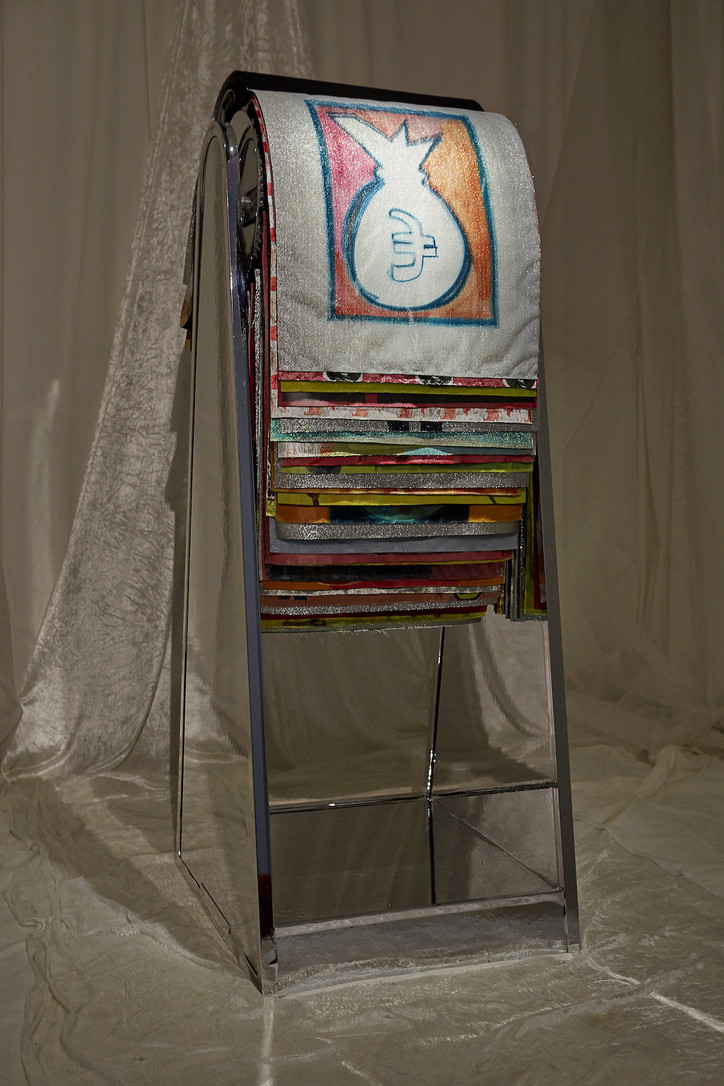
Sadie Williams and Carla Busuttil
While London based designer Sadie Williams focuses on the juxtaposition between modern textiles and craft, South Africa born artist Carla Busuttil explores contemporary notions of power through arts, mainly dedicating herself to painting. Inspired by the act of scrolling through social media and Google Ads, the two came together to create a material response to the permeation of technology in our daily lives.
Do you think social media can be a powerful tool to promote yourself as a creative individual? Do you think it can have any bad aspects at all?
SW When I started designing fashion there was no social media, people used to go to a proper library, research and buy books. I’ve been teaching now for some time at university and the amount of printouts that I see that are taken from Instagram, and no one knows the source - that worries me that people don’t really care about what they are researching anymore. But as a young designer, social media is how I survive as a label as well. I’ll get sponsorships or jobs coming through because I can offer them social media presence, it’s a balancing act.
CB It gives some people a voice or a platform to show their work. If you are in the arts and not represented by a gallery, it’s like an alternative world.
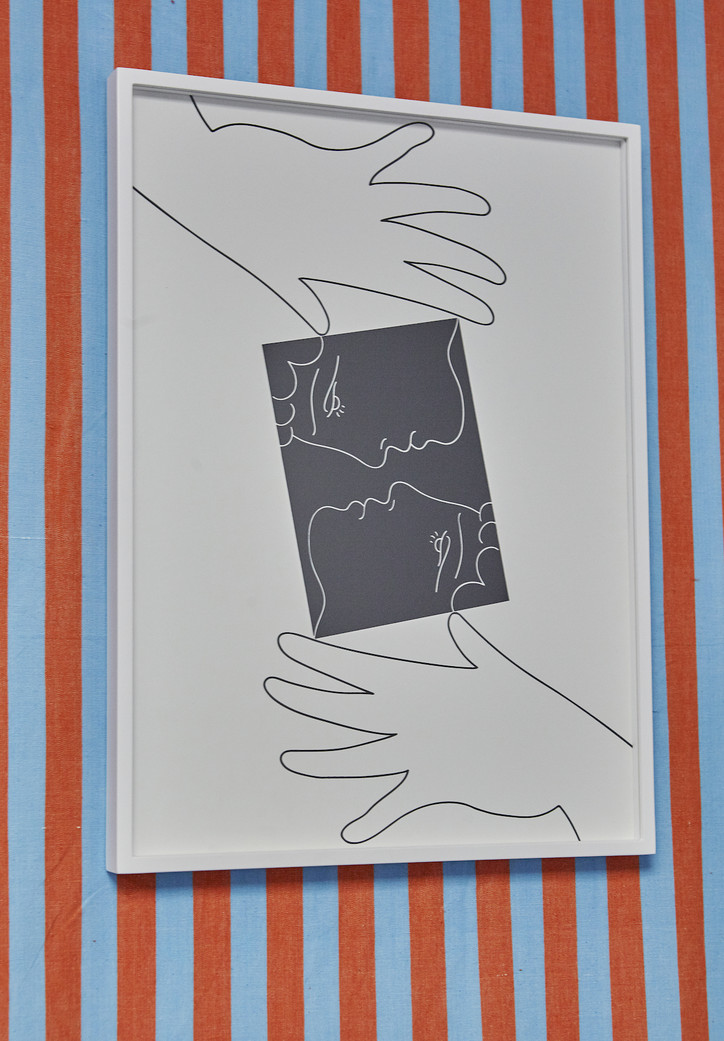
Richard Malone and Marco Palmieri
Illustrator Marco Palmieri and fashion designer Richard Malone both work with graphic, linear and colourful elements. Palmieri’s paintings often reference images of leisurely and classical heritage with pensive or melancholic subjects, and Malone’s design aesthetic is highly sculptural and geometric. Together they created an installation of totems, arch-like panels covered in geometric fabric patterns.
What have you learned the most from this collaboration?
RM The freedom to do a project that you wouldn’t have otherwise. It’s quite hard to come across these projects, to just call someone and say, ‘wanna make something?’. Here we have the funds to make anything and see if it works. It’s like some sort of experiment, it reminds me of being in a university where you just make and see what happens and that quite nice – it’s quite informal and human.
MP Well, it sounds like a bad word but what comes to mind for me is: wing it. You have to wing it, and see how it goes. This idea of being successful or not - it’s more, ‘let’s try it and see what comes out from that’. Personally, I’m leaving from this seeing certain things from a different perspective, not only my work, but also Richard’s work and the overlap between the two.
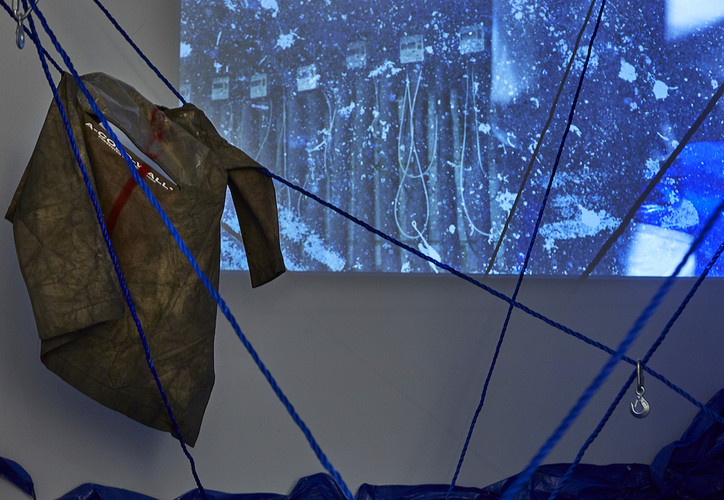
Samuel Ross and Julie Born Schwartz
With a background in graphic and product design, the LVMH prize menswear finalist Samuel Ross of A-COLD-WALL* is a multidisciplinary fashion designer. Working with visual artist Julie Born Schwartz who uses film, photography and sculpture in her practice, their collaboration resulted in an installation of ropes, fabrics and garments juxtaposed with video stills of the collection.
How and why do you think London is a particular hub for new, creative talent?
SR I think outside of London it’s harder. People who are really driven will go to the capitals where there are hubs for incubation. That’s been happening for a long time here, and the British Fashion Council is doing a really good job in making sure that talents are found. For example, I studied product design not fashion, but they still took me under their wings to support my creative endeavours.
JBS Because it is a meeting point where people from all around the world live, study and work. The people make the city and this diversity in cultures has created a super interesting and wonderful city. And then it is a city where so much is going on all the time. While I was studying, I used the city a lot - going to different screenings, seminars and concerts, there is so much to be inspired by.
